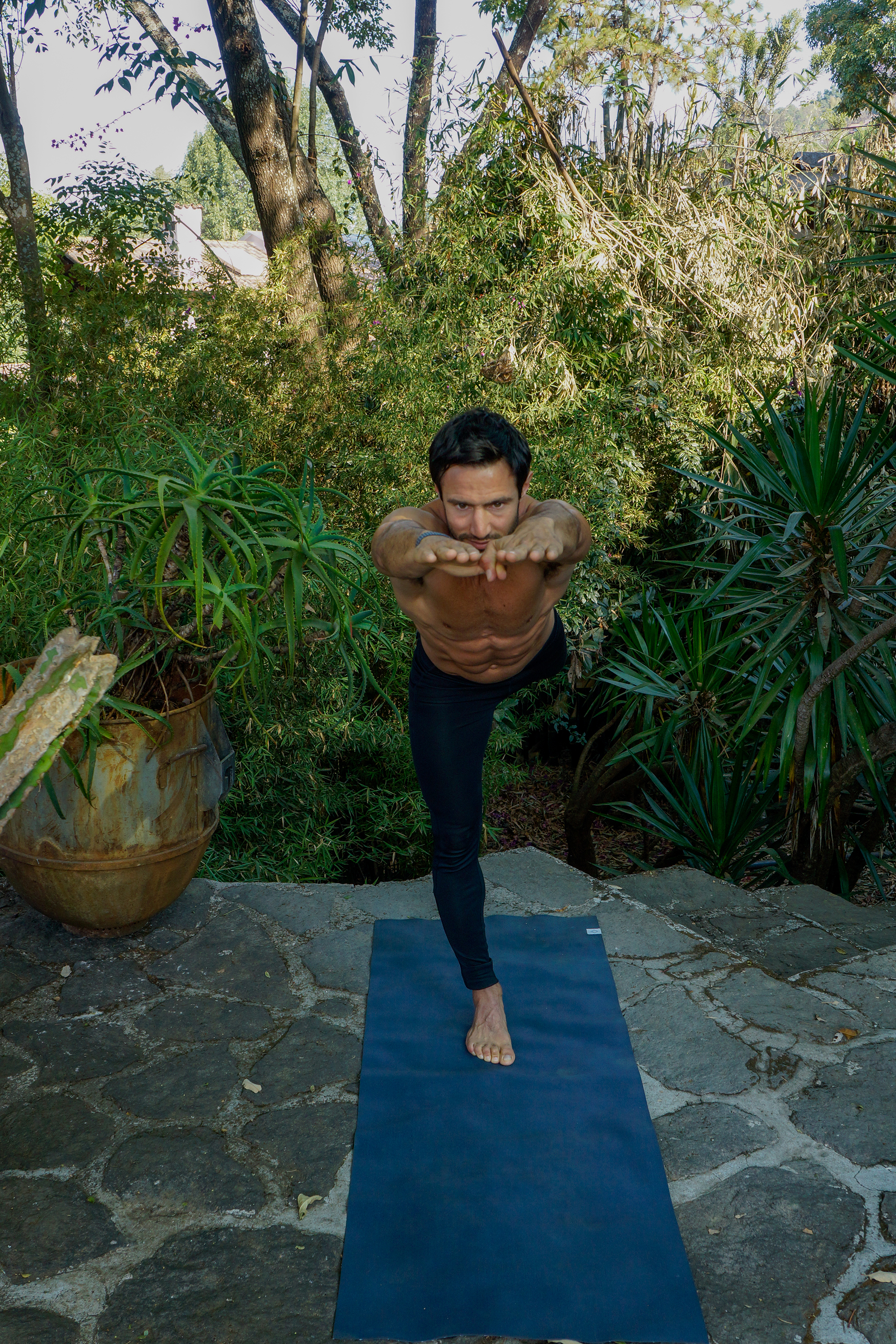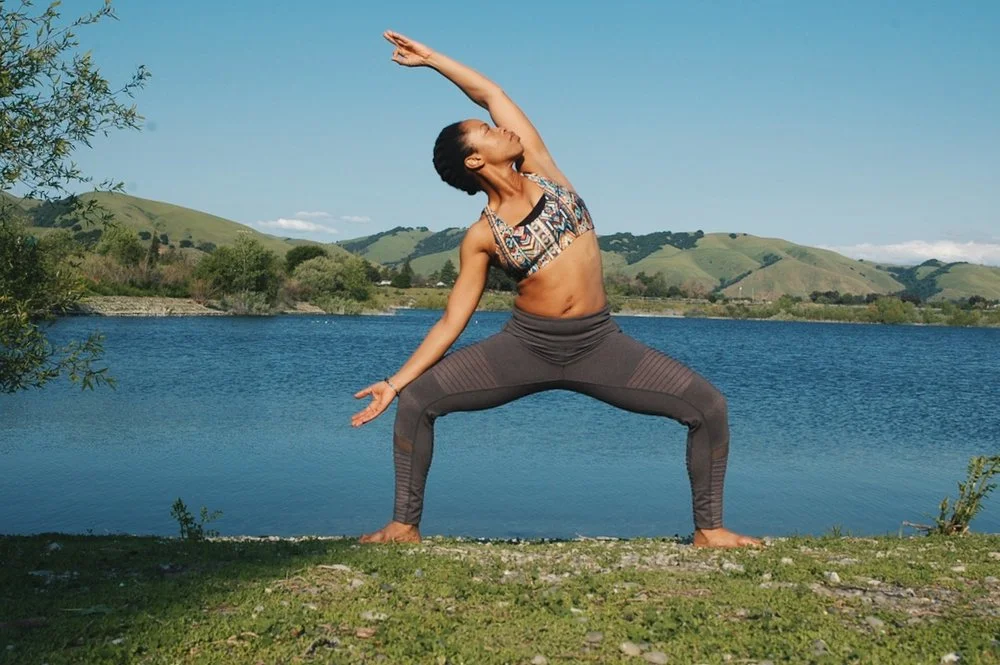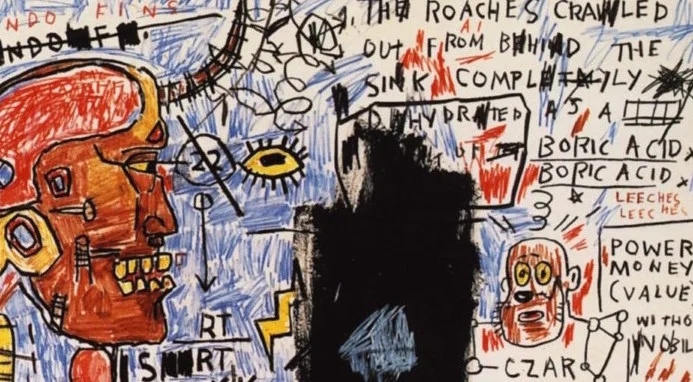Discipline & Attention: YOGA AS THE WARRIOR'S PRACTICE
The Warrior's practice is about finding your center:
build physical and mental focus through balance and control.
SKANDA, The Leaper, The Son of Shiva, and The God of War
In The Origins of Yoga as a Warrior's Practice, we explored how yoga can equally be a warrior's practice. Like the Lord of Yoga, Śiva, we can be both yogi and warrior, balanced in our dual-nature. Our inner yogi nature seeks the mystery of the practice. The warrior within us works toward mastery of the practice. As a warrior, we embody sthiram, stability, strength, and stamina. As a yogi we take on the quality of sukham, openness, ease, and endurance.
As both the yogi and the warrior we fight our fiercest battles within our mental landscape. We train through the practice with the aim of self-mastery. We must always be alert and ready to show up as our highest self in battle. Steadfast in our resolve, armed with the knowledge of yoga, bearing a sword and a mirror. The sword of discrimination cuts through our fears, clearing the confusion of our minds so we can see things with clarity. The mirror of self-reflection brings us face-to-face with our inner demons, facing the adversities of our psyche.
To combat the forces that cause fear, destruction, doubt, and confusion and to achieve ultimate vitality, the great yogic sage Patañjali, in his Yoga Sūtra (sūtra 2.26-2.29) put forth the Aṣṭāṅga-yoga-marga, or Eight-Limbed Path of Yoga also known as Rāja Yoga, The Royal Path:
AṢṬĀṄGA YOGA : THE EIGHT LIMBS OF YOGA
yama: restraints
niyama: observances
āsana: posture
prāṇāyāma: expansion of breath and prāṇa
pratyāhāra: drawing of the senses inward
dhāraṇā: fixed concentration
dhyāna: meditative contemplation
samādhi: absorption into the flow state
We embark on the Eight-Limbed path by first strengthening our character through rigorous practices of discipline and attention toward ethical restraints and observances.Through yamas and niyamas we come to discern the difference between light and dark force. Through āsana we come to learn to settle the body by loosening the grip around our effort. By prāṇāyāma we gain mastery over the breath. The body and the breath become relaxed, steady and strong (sthira-sukham; PYS 2.46). By means of pratyāhāra, the outer eye closes and the attention turns inward. The senses are alert and undistracted, mastered through the consistency of self-discipline. Resisting the urge to ruminate on the past or project into the future, the mind comes into the focused concentration of the dhāraṇā state. We arrive in the present moment, fixed solely on our intention, held steady in the mind's eye through the dṛṣṭi gaze. Completely grounded, anchored, and centered, we enter into the meditative dhyāna state where we explore creative energy. The precision of our practice is expressed through the tension-lines of the body. Completely stable and relaxed, our movements flow with the effortless grace of self-mastery, a skill that must be built-up by means of sustained effort and deep concentration. Through true dedication, we connect our practice with the passion of our higher purpose. The rush of uniting practice with purpose is experienced as total absorption of the present moment. This is complete yogic samādhi, the sweet fruit of victory for the yogi and the warrior within us.
“When there is external and internal balance, a rhythmic flow of energy and awareness is experienced evenly through the body and being. A pure state of joy is felt in the cells and the mind. The body, mind and soul are one. This is meditation in the practice of an āsana.”
Find your purpose.
Without an intention (sankalpa) toward our purpose (dharma), we may become confused about what we stand for just as Arjuna was confused as he stood on the battlefield. This tangle between Arjuna's pleasures, his aversions, and his duty lead to incredible inner turmoil. A true warrior does not fight to fight, but is one who defends the defenseless, sacrifices oneself for the greater dharma and the good of others. In yoga, intention is everything.
SVADHARMA: Soul-calling
SVA: one's own
DHARMA: duty, purpose, custom
SANKALPA: Intention, willed decision, declaration of purpose, volition
SAṂ + √KḶP: To imagine, resolve, or fix together (in the mind and the heart)
In the yoga tradition, we call our purpose or soul-calling our SVADHARMA and our svadharma is linked to our SANKALPA, or focused intention. Our intention guides us along the path toward our full potential and leads us to our highest purpose. A warrior's intention looks beyond the individual and toward something greater than the self:
Searching for your sankalpa? Take a moment to ask yourself these questions:
- What do I practice?
- What is the deep reason why the practice has shown up in my life? What brings me to my mat?
- How can I be of service in my practice?
- In what ways does my practice connect with my passion?
Connect with intention.
Connecting with your intention is the first step for setting up a focused yoga practice. Through the technique of one-pointed concentration, fix your mind on your intention, as you would a mantra repeated throughout the duration of the practice. Show up consistently, even ritualistically, until you find ease in the practice. This is what will propel you into the flow state. Focus on generating positive energy, expressing with integrity and moving into alignment with your svadharma... your purpose.
“Holding the body steady, with the three (upper parts, chest, neck, head) erect,
directing the senses and the mind deep within the heart,
the wise person crosses the mind-born streams of fear
by using the life-boat of mantra.”
yoga: THE warrior's PRACTICE
The Warrior's practice is a strong, assertive sequence of yoga postures with a focus on skandāsana, or the leaping warrior posture. Use these postures as a vehicle for building up willpower, determination, physical and psychological strength. Skanda represents the ultimate warrior and is known in Indian mythology as the God of War. Commander of the celestial army and son of Śiva, the Lord of Yoga, he was born for the purpose of slaying the demon Taraka. Skanda literally means "to leap, jump or hop" as in an action of swift attack. The practice offered below honors this warrior within us: It encourages us to explore our inner power by bearing our own weightiness while it also challenges us to express a sense of valor through a sequence of side lunges and standing balances.
How to approach each āsana:
- Looking inward and outward with full awareness.
- Giving everything to the obstacle or task at hand.
- Not turning away from the unpleasantness before us but continuing ahead, straight-on.
KRAMA 1
TĀḌĀSANA: Mountain Pose
Begin with an intention to move through the practice with strength and integrity.
Mentally seal your intention through focused visualization. Visualize your intention as anchoring your mind and body into the present moment. Perhaps your intention becomes your mantra, what you return to for help in crossing over any obstacles you may encounter along the path.
Take a moment to notice any sensations. Notice your breath. Notice your heart. Establish a closed circuit of energy in your body by joining both hands together at the front of the chest in añjali-mudrā: the gesture of reverence.
Tap into the strength and power of your foundation (mūlādhāra-cakra: the network of subtle energy generated below the navel) as the four corners of both feet press into the ground to connect with the earth. Continue to stand firm in tāḍāsana: standing mountain posture, for several breaths with complete focus on your intention.
INHALE: Draw fresh breath into the center of the chest. Envision the circulating heart-energy center (anāhata-cakra: the spinning vortex of subtle energy at the heart).
EXHALE: Send all cultivated energy in a downward direction, through the feet and into the ground. Feel rooted by the force of gravity, but not pulled by it.
KRAMA 2
VṚKṢĀSANA: Tree Pose
Focus your gaze just above the horizon in the distance. Reaffirm the strength in your foundation.
Moving in sync with the breath, draw the sole of the left foot to the inside of the right thigh in vṛkṣāsana, standing tree posture. The right leg should feel rooted and stable as the left thigh draws back. Imagine your body growing upward from your foundation.
Keep your focus fixed on the horizon and your chest open as you move the left hand out to the side. Close the circuit of energy by touching the thumb of the left hand to the index finger in jñāna-mudrā, the gesture of illuminated wisdom.
INHALE: Lift the chest and imagine a free flow of energy traveling upward through the suṣumṇa-nāḍī, the central channel along the spine and out through the crown of the head (sahasrāra-cakra: subtle energy emitted from the top of the head).
EXHALE: Reinforce your foundation by rooting down through the supporting leg and imagine the trunk or torso reaching upward away from the earth with the neck and limbs extending out from the center. Hold your center of balance for several moments.
KRAMA 3
VĪRABHADRĀSANA III: Balancing Warrior Pose
Find your balance, stability, and control.
Move with mastery from your center.
Return both hands to meet at the center of the chest. Pause for a moment to recall your intention. Close the circuit of energy, creating a bind by interlacing both thumbs together.
Draw the torso forward while extending the left leg back behind you until the body is parallel with the ground in vīrabhadrāsana III: balancing warrior posture. Reach the arms forward, keeping the thumbs bound but opening the hands so that both palms are facing downward. Find your balance by connecting with a sense of control and stability of the hips (svādhiṣṭhāna-cakra: the subtle energy between the hips and the lower abdominal region).
INHALE: Reach the energy of the fingertips forward toward the horizon, with the gaze fixed just past the fingertips. Feel an uninterrupted line of energy from the toes, along the spine, through the crown of the head and all the way out to the fingertips.
EXHALE: The legs and shoulders are stable and strong. Contract into the center of the body, drawing the ribs in toward the mid-line of the body. Imagine energy being cultivated at the center of the body between the navel and diaphragm (maṇipūra-cakra: vortex of subtle energy cultivated above the navel and around the diaphragm). Maintain several deep, steady breaths.
KRAMA 4
SKANDĀSANA: Side Lunge
Tap into your inner fire.
STAY ACTIVE AND ENGAGED.
Keep both hands in front of you with the thumbs securely bound. Without using your hands for balance, step the left foot out to the left. Bend into the left knee until you come into a deep side lunge posture, skandāsana. The right leg is extended straight out to the right. Maintain a closed circuit of energy by grounding the edge of the right foot down into the earth. Both legs are stable, supported and actively engaged. The inner thighs are energetically drawing toward the mid-line.
INHALE: Sense energy drawing up through both legs, and all the way up the spine, out the crown of the head and through the fingertips. Keep the chest lifted and the hips strong and supported rather than allowing the prāṇa, or subtle energy, to sink down toward the ground.
EXHALE: Gaze over the right shoulder. Feel the power generated deep in the low belly, just below the navel (svādhiṣṭhāna-cakra: the subtle energy between the hips and the lower abdominal region).
Maintain the strength in the pose for several breaths before transitioning back into vṛkṣāsana, standing tree posture.
KRAMA 5
ŪRDHVA HASTĀSANA: Upward Salute
Rise up with power and confidence.
MOVE WITH GRACE.
With a sense of integrity and control, press into the outside edge of the left foot to spring back up into vṛkṣāsana, standing tree posture. Maintain repose as you come back to a standing posture with both feet on the earth, hips-width apart.
INHALE: Reach the arms up overhead. Close the circuit of energy by joining the palms together above you in ūrdhva-hastāsana: upward hands posture. Lift the chin and open the throat as you bring the gaze skyward (viśuddha-cakra: the energy center at the front of the throat).
EXHALE: Draw the palms down toward the center of the forehead with the thumbs lightly touching the space between the eyebrows (ājñā-cakra: the subtle energy intuited between the eyes). Return back to tāḍāsana: standing mountain posture. Gently close the eyes, standing with the palms joined at heart-center to close the circuit of energy and seal your intention once again.
- Repeat the sequence on the other sidE -
CLOSE THE PRACTICE:
Complete the practice by standing with both feet together, equal weight in both legs and the arms at the sides of the waist in samasthitiḥ: equal standing posture. Stand at attention, bringing awareness to the body and the breath. Feel a sense of relaxed power and balance of energy on the right and left side of the body. Take several moments to absorb the benefits of the practice.
CLOSING AFFIRMATION: We arrive on the battlefield of life to fulfill our purpose. We stand strongly and hold our ground in the face of fear, doubt, and confusion. We invoke our inner strength and courage. We connect with total awareness and intuition. We move with mindful attention, strength and the graceful repose. We learn how to face our challenges and defeat our perceived adversities.
Model: Augusto Almeyra, Fitness Coach / Multisport Athlete



























